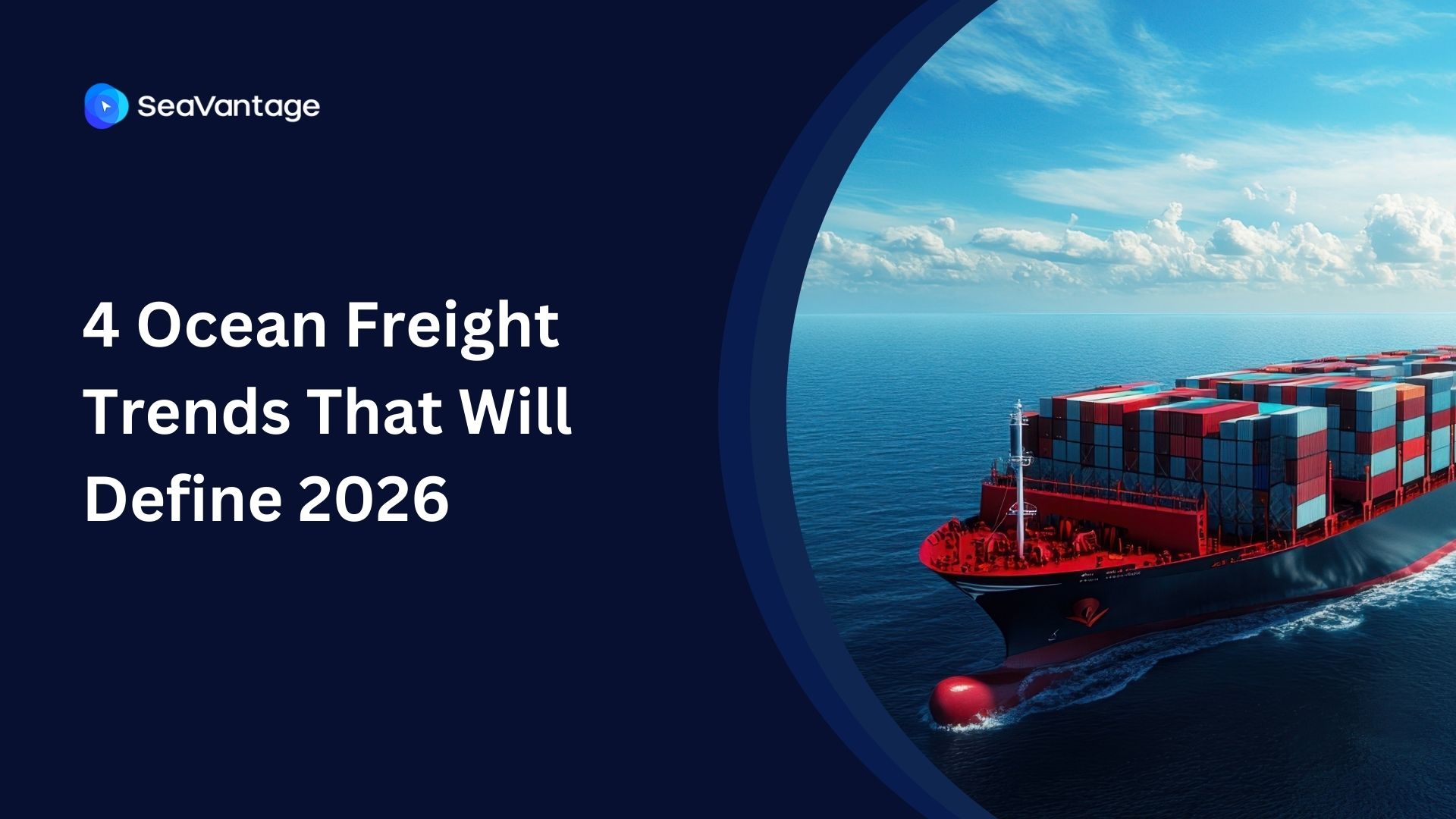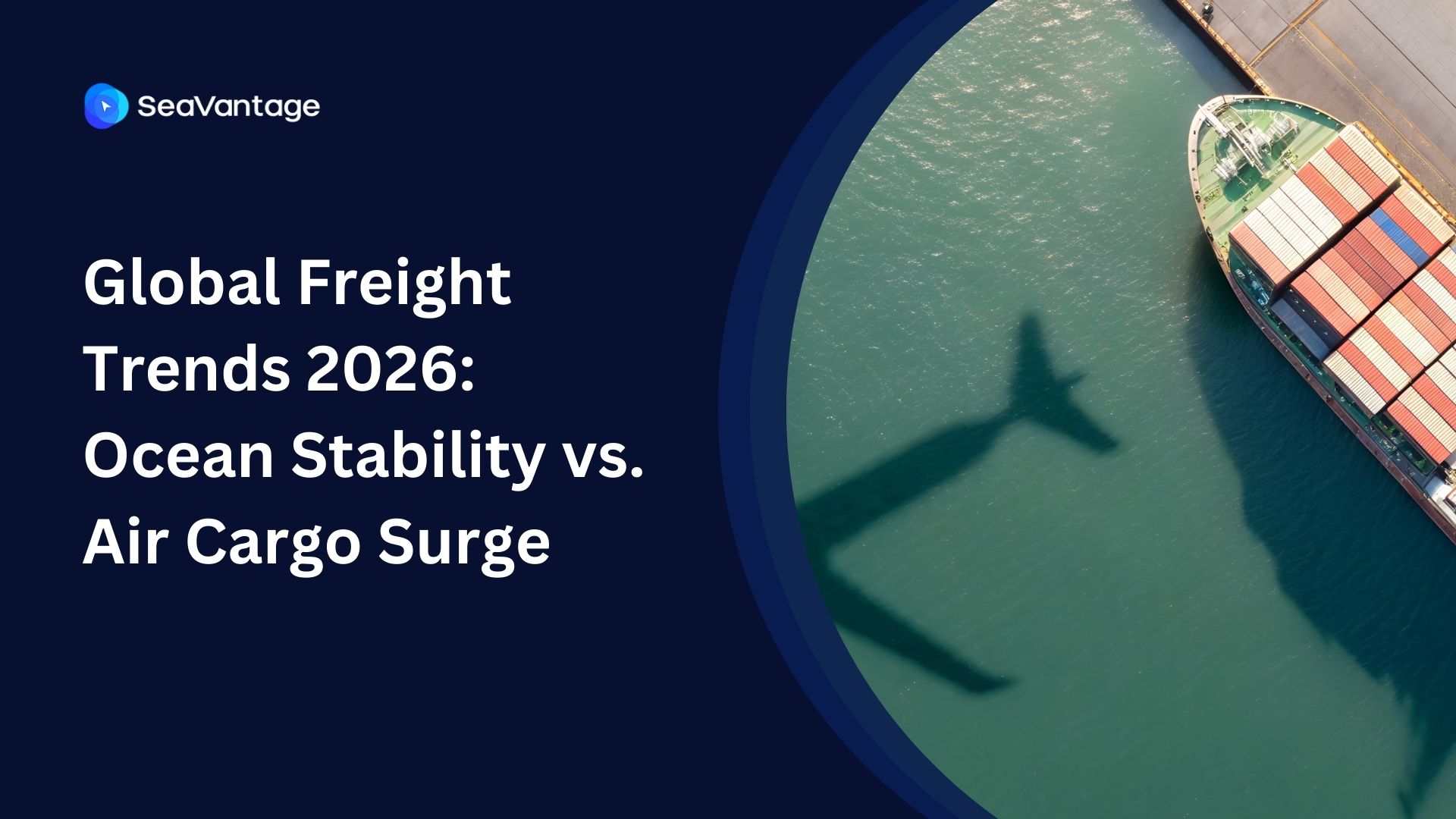Understanding TEU in Ocean Shipping: A Guide for Logistics Professionals
.jpg)
Introduction
If you're in the logistics or shipping industry, you've likely come across the term TEU (Twenty-foot Equivalent Unit). But what exactly does it mean, and why is it so important? TEU is a standardized unit used to measure container capacity in ocean shipping. It simplifies the complexities of international trade by providing a universal metric for comparing cargo volumes. Understanding TEU is essential to manage fleet capacity, optimize shipping routes, or analyze global trade trends. Let’s break down TEU, how it’s calculated, and why it plays a crucial role in global logistics.
What Is a TEU?
A TEU (Twenty-foot Equivalent Unit) is a standardized measurement used to describe the capacity of cargo containers and vessels. It is based on the dimensions of a 20-foot shipping container, which measures:
- Length: 20 feet (6.1 meters)
- Width: 8 feet (2.44 meters)
- Height: 8.5 feet (2.59 meters)
This standardized unit allows logistics professionals to compare vessel capacities, port throughput, and shipping rates consistently.
Why Is TEU Important in Ocean Shipping?
TEU is a universal metric in containerized shipping, enabling efficient planning and operations across the supply chain. Here's why it matters:
1. Capacity Measurement
TEU helps in calculating the number of containers a ship can carry. For example, a vessel with a capacity of 20,000 TEUs can hold approximately 20,000 standard 20-foot containers.
2. Port Operations & Terminal Planning
Ports use TEU as a benchmark to determine container handling volume and optimize loading/unloading procedures. In 2023, the Port of Shanghai handled over 47 million TEUs, making it the busiest container port in the world.
3. Freight Cost Calculation
Shipping companies and freight forwarders often price shipments based on TEU capacity. The average shipping cost per TEU can fluctuate depending on demand, fuel prices, and global trade conditions.
4. Logistics Optimization
TEU standardization enables efficient route planning, cargo consolidation, and fleet management, making global supply chains more predictable and cost-effective.
How to Calculate TEU Capacity
Step-by-Step Guide:
- For a 20-foot container: Length (20 ft) ÷ 20 ft = 1 TEU
- For a 40-foot container: Length (40 ft) ÷ 20 ft = 2 TEUs
Example Calculation:
If a cargo ship carries:
- 50 twenty-foot containers (TEUs)
- 30 forty-foot containers (FEUs)
The total TEU capacity is:
(50 x 1) + (30 x 2) = 50 + 60 = 110 TEUs
Understanding this calculation helps in logistics planning and capacity forecasting.
Factors That Influence TEU Capacity
TEU capacity is not solely determined by container dimensions. Several factors can affect how many TEUs a vessel can accommodate:
1. Container Weight Limits
Ships have a maximum weight limit, meaning they cannot always be loaded to full TEU capacity if the cargo is too heavy.
2. Vessel Design & Layout
Ship architecture, including deck space, stacking configurations, and stability constraints, impacts TEU capacity.
3. Cargo Type & Volume
Some cargo types, such as refrigerated goods (reefers) or oversized machinery, require special handling, reducing overall TEU capacity.
4. Port & Canal Restrictions
Certain ports and canals (e.g., the Panama Canal) have size restrictions that limit the number of TEUs a ship can carry.
The Role of TEU in Global Trade
TEU is a critical metric for analyzing global shipping trends. In 2024:
- Global container trade volumes reached 15.9 million TEUs per month, reflecting a surge in demand.
- The Port of Shanghai remained the busiest, handling over 47 million TEUs annually.
- Due to shifts in manufacturing from China to Southeast Asia, shipowners are favoring mid-sized vessels (12,000–16,999 TEUs) over ultra-large ships.
These changes highlight how TEU calculations influence fleet investments, port infrastructure, and trade policies.
Challenges & Limitations of TEU
While TEU is a widely used measurement, it has limitations:
1. Variations in Container Height
Some containers, like high-cube containers (9.5 feet tall), occupy more space but are still counted as 1 TEU, which can be misleading.
2. Non-Standard Containers
Specialized containers (e.g., tank containers or open-top containers) do not always fit the standard TEU calculation, making capacity estimation complex.
3. Weight vs. Volume Constraints
TEU measures space, not weight. A ship might reach its weight limit before hitting its TEU capacity, especially with heavy cargo like steel or machinery.
Conclusion
TEU is a fundamental concept in ocean shipping, providing a standardized measure for container capacity. It plays a crucial role in:
- Vessel & port operations
- Freight cost calculations
- Global trade analysis
Understanding TEU allows logistics professionals to make informed decisions, optimize shipping efficiency, and navigate the complexities of international trade.
2025년 9월, 주요 글로벌 항만에서 어떤 운송사가 가장 긴 선박 체류 시간을 기록했는지 확인해보세요. 트렌드를 비교하고, 지연을 파악하며, 전체 항만 데이터를 통해 운송 전략을 최적화할 수 있습니다.
2025년 8월, 주요 글로벌 항만에서 어떤 운송사가 가장 긴 선박 체류 시간을 기록했는지 확인해보세요. 트렌드를 비교하고, 지연을 파악하며, 전체 항만 데이터를 통해 운송 전략을 최적화할 수 있습니다.
2025년 7월, 주요 글로벌 항만에서 어떤 운송사가 가장 긴 선박 체류 시간을 기록했는지 확인해보세요. 트렌드를 비교하고, 지연을 파악하며, 전체 항만 데이터를 통해 운송 전략을 최적화할 수 있습니다.
iscover the 4 critical ocean freight trends for 2026, from the Red Sea reopening and fleet overcapacity to shifting global trade maps. Prepare your supply chain now.
Discover key 2026 freight market trends: Port of Houston expansion, air cargo "super peak," and ocean freight stability. Plan your supply chain with SeaVantage.
Explore November 2025 global port dwell time data. See which ports and carriers led in efficiency across Antwerp, Busan, Long Beach, Rotterdam, and Singapore.



.svg)





.jpg)

.png)